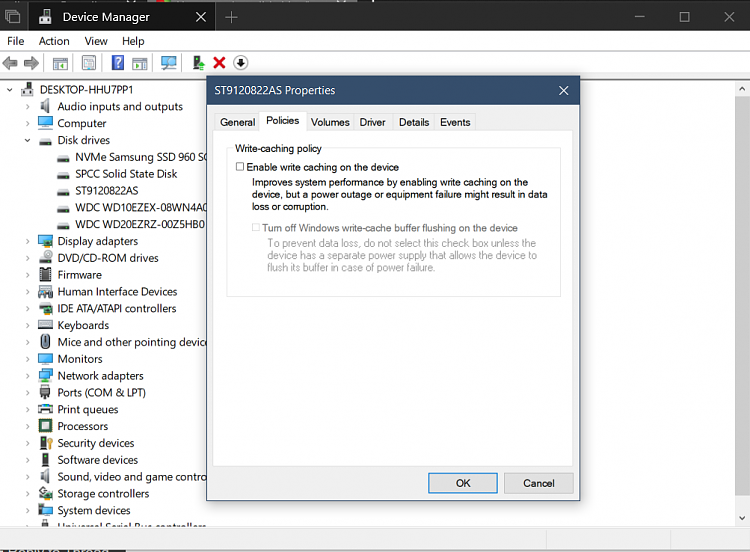TOSHIBA RAID LD0 SCSI Disk Device - Driver Download. Vendor:. Product: TOSHIBA RAID LD0 SCSI Disk Device. Hardware Class: DiskDrive. Search For More Drivers.: Go! Windows 10 32-Bit Driver. Total Driver Versions: 1. Recommended Driver. Driver Date:: Release Notes: Driver Version: 10.0.16299.15: PC Matic Notes: Version. Toshiba Group is responding to the global coronavirus pandemic with measures that prioritize the safety of our employees and their families, and of our customers and business partners. We continue to monitor the situation and to follow government guidance and instructions, while doing all we can to ensure business continuity.
This tutorial will take you through the steps involved in installing both internal and external SCSI devices – specifically a CD-ReWriter and scanner – covering each of the following:

Thank you for choosing Toshiba for all your storage device needs. Toshiba Support is right at your fingertip. Let us know what we can do to assist you. Small Computer System Interface, or SCSI (pronounced scuzzy), is a set of standards for physically connecting and transferring data between computers and peripheral devices. The SCSI standards define commands, protocols, and electrical and optical interfaces. SCSI is most commonly used for hard disks and tape drives, but it can connect a wide range of other devices, including scanners and CD. Intel® Rapid Storage Technology Driver Installation Software with Intel® Optane™ Memory. The Intel® Rapid Storage Technology (Intel® RST) Floppy Driver (18.0.1.1138) supports the configuration and enabling of system acceleration with Intel® Optane™ memory and maintenance of RAID 0/1/5/10. Driver: Windows 10, 64-bit. Windows Server 2016.
- installing the host adapter
- configuring the devices
- mounting the internal drive
- making the connections
- installing the associated software.
As with most specifications in the computer world, the original SCSI (pronounced scuzzy) specification was completed (in 1986) after work had already begun on a better version (SCSI-2). It was developed as a result of attempts by Shugart and NCR to develop a new interface for minicomputers. The basis of the interface was, and still is, the set of commands that control data transfer and communication among devices. The commands were the strength of SCSI, because they made the interface intelligent; but they were also its initial weakness, as there wasn’t enough of a standard for the command set to be truly useful to device manufacturers. Consequently, in the mid-1980s, the Common Command Set (CCS) extension was developed to standardise SCSI commands.
The SCSI interface is a shared-bus configuration that supports a wide variety of peripherals, including HDDs, tape drives, optical drives, scanners, printers, and redundant arrays of independent disks (RAID) subsystems. The SCSI bus operates independently of the system CPU and the system bus through an integrated or plug-in host bus adapter (HBA).
The actual controllers are built into each SCSI device. Thesycon 1394 Driver Download for Windows 10. They “chain” SCSI peripherals to the SCSI bus via the host adapter. Each device on the chain, including the host, must be identified by a unique ID number. One SCSI device must not use the same ID number as another, but they may be numbered non-sequentially. Most SCSI host adapters feature external and internal connectors, with the option for the chain to extend in either or both directions. There’s no relationship between the IDs and the physical position on the bus, but both ends must be electrically “terminated” with resistors to prevent signal reflections and guarantee data integrity over long cable lengths. Termination comes in several varieties, from physical jumpers or plugs to software configurations.
The SCSI-1 standard allows for 8 devices to be connected to a single SCSI cable on a narrow bus configuration (8 data lines); SCSI-2 increases support to 16 devices on a wide bus configuration (16 data lines). New SCSI interfaces are backward compatible with most previous SCSI interfaces. SCSI devices of differing transfer speeds can coexist on the same SCSI bus. To guarantee compatibility and data reliability, transfer rates are negotiated between devices before data transfer is initiated
Hardware Upgrades | PC Maintenance | PC Troubleshooting | PC Customization | PC Leisure
DVD and 3D video player for owners of Toshiba PCsTOSHIBA Video Player is a Windows-based software application that lets you view DVD movies, or video content recorded using home video camcorders. You can play DVD-Video, DVD-VR, and video files. Furthermore, you can convert 2D home videos and other 2D content you create into 3D and enjoy them in 3D. Use the on-screen control panel to operate the TOSHIBA VIDEO PLAYER.
Scsi Device Driver
Features and highlights

- Select between different methods of 3D playback: Side-by-side and Interleaved
- 2D to 3D video on-the-fly conversion
- Blu-ray video playback support
- Select between subtitle and audio languages
- Customized color settings
Toshiba Video Player 5.3.29.107 on 32-bit and 64-bit PCs
This download is licensed as freeware for the Windows (32-bit and 64-bit) operating system on a laptop or desktop PC from video players without restrictions. Toshiba Video Player 5.3.29.107 is available to all software users as a free download for Windows.
Toshiba Scsi & Raid Devices Driver Updater
Filed under:Linux Scsi Driver
- Toshiba Video Player Download
- Freeware Video Players
- Major release: Toshiba Video Player 5.3
- Video Playing Software